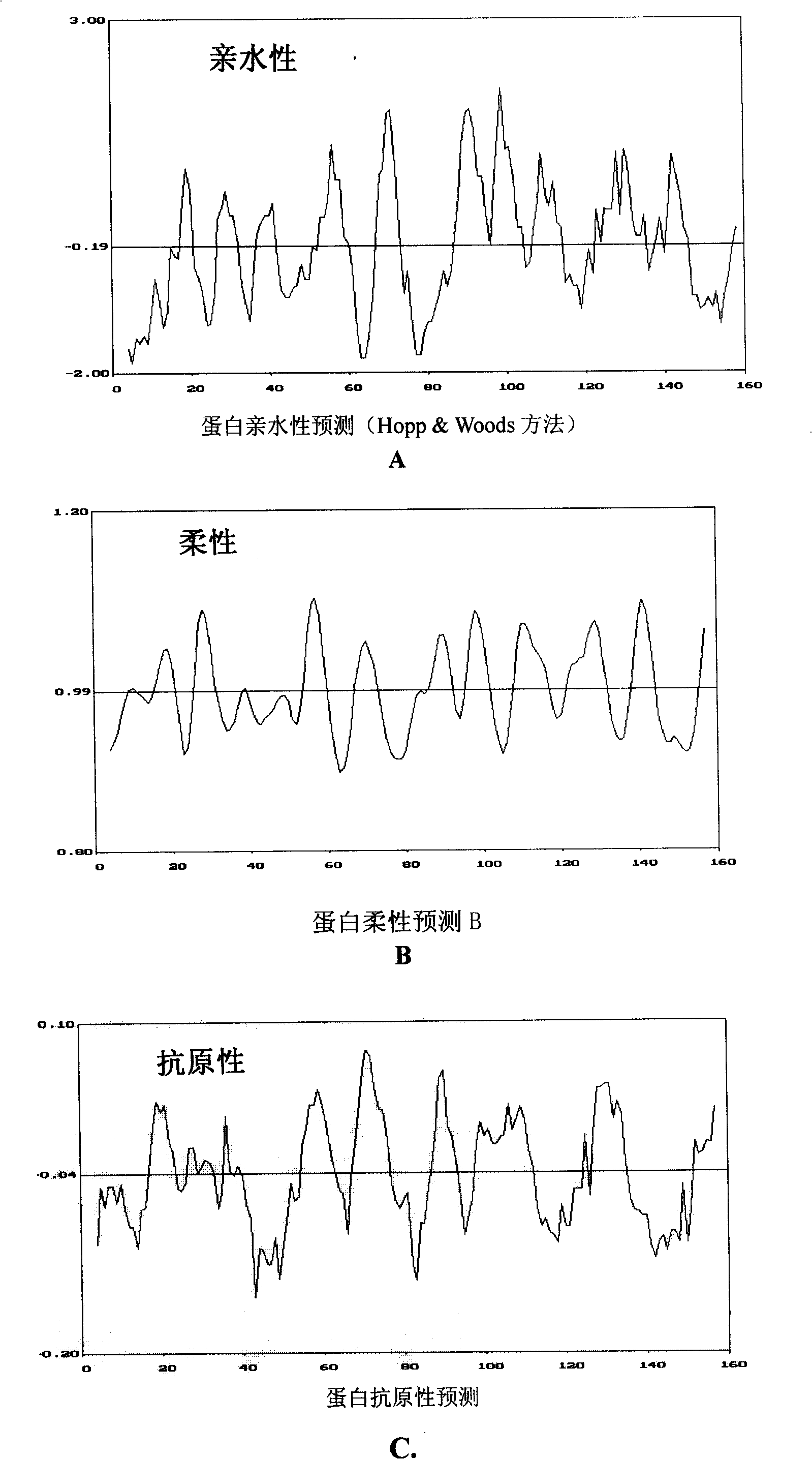Antimicrobial antiphlogistic antagonism polypeptide simulating MD2
An antagonistic, biological polypeptide technology, applied in the direction of anti-inflammatory agents, antibacterial drugs, peptides, etc., can solve problems such as weak affinity and inability to confer TLR4 reactivity
- Summary
- Abstract
- Description
- Claims
- Application Information
AI Technical Summary
Problems solved by technology
Method used
Image
Examples
Embodiment Construction
[0030] (Completed in six steps)
[0031] Experiment 1. Bioinformatics analysis of MD2 protein and selection of templates for screening antagonistic polypeptides.
[0032] Purpose of the experiment: To use bioinformatics technology to analyze the structural characteristics of MD2 protein, analyze parameters such as hydrophilicity, accessibility, flexibility, etc., and find the key amino acid sequence for the interaction between MD2 and the bacterial toxin LPS. And use this sequence as a template to lay the foundation for subsequent screening of its corresponding antagonistic polypeptides.
[0033] experimental method
[0034]1. Single-parameter prediction: Hydrophilicity, Antigenicity, Accessibility and Flexibility of the main chain of MD2.
[0035] 2. Secondary structure prediction and other information analysis: completed on PHD and SOPMA servers.
[0036] 3. Determination of cell epitopes: Summarize the single-parameter prediction results; exclude sequences whose secondar...
PUM
 Login to View More
Login to View More Abstract
Description
Claims
Application Information
 Login to View More
Login to View More - R&D
- Intellectual Property
- Life Sciences
- Materials
- Tech Scout
- Unparalleled Data Quality
- Higher Quality Content
- 60% Fewer Hallucinations
Browse by: Latest US Patents, China's latest patents, Technical Efficacy Thesaurus, Application Domain, Technology Topic, Popular Technical Reports.
© 2025 PatSnap. All rights reserved.Legal|Privacy policy|Modern Slavery Act Transparency Statement|Sitemap|About US| Contact US: help@patsnap.com



